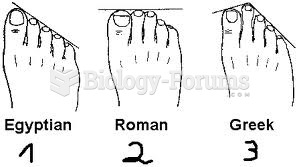Answer to Question 1
Three examples of printed forms are the standard memo, the message memo, and the routing
slip.
a) Standard memos: Printed interoffice memo forms make it easy to both write and read
memos. These printed forms often list the writer's name and telephone number. The writer
simply writes in the appropriate information and forwards the memo. The heading of a printed
memo form usually contains (1) the name of the company, (2) the title Interoffice
Memorandum or Interoffice Memo, and (3) the guide words TO, FROM, DATE, and
SUBJECT. In some organizations, the preferred sequence is DATE, TO, FROM, and
SUBJECT. In a large organization, the heading may also contain Department, Location,
Telephone Extension, Fax Number, and E-mail Address.
b) Message memos: These are used to record phone messages and messages from visitors.
These forms consist of lines for the caller's name and telephone number and for a brief
message.
c) Routing slips: These are used to channel messages to specific people. If a routing slip is not
used often, the spaces following the guide words for names and office telephone numbers can
be left blank. If a routing slip is used often, the names and office telephone numbers should be
printed on the form.
Answer to Question 2
By using the six Cs of communication, you can write messages tailored to the reader's needs.
Your writing should be:
a) Clear: Use specific information, direct wording, and transitions. Replace specialized terms
and jargon with words familiar to readers.
b) Complete: Include all pertinent details so the reader has all the information needed to make
a decision.
c) Concise: Get to the point quickly without being abrupt, curt, or rude. Cut irrelevant words,
sentences, or paragraphs. You will save your reader time and improve the quality of your letter
or memo.
d) Consistent: Use the same treatment for similar items, such as using courtesy titles and
abbreviations of states. Also, use formatting techniques such as indenting, numbering, and
single- or double-spacing consistently throughout a document.
e) Correct: Verify that the information is accurate, and check the document for correct
grammar, usage, spelling, and punctuation.
f) Courteous: Write your message with the reader's viewpoint in mind.







